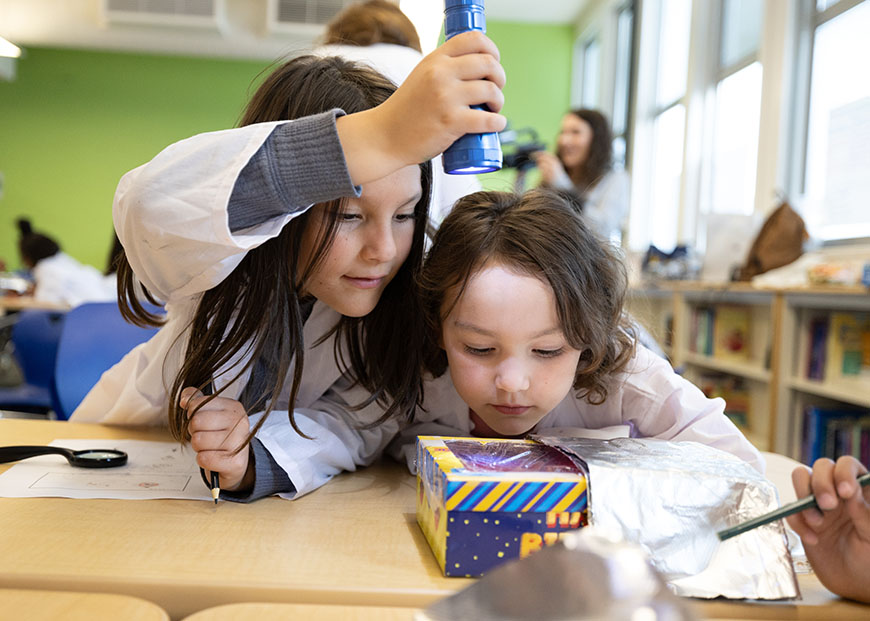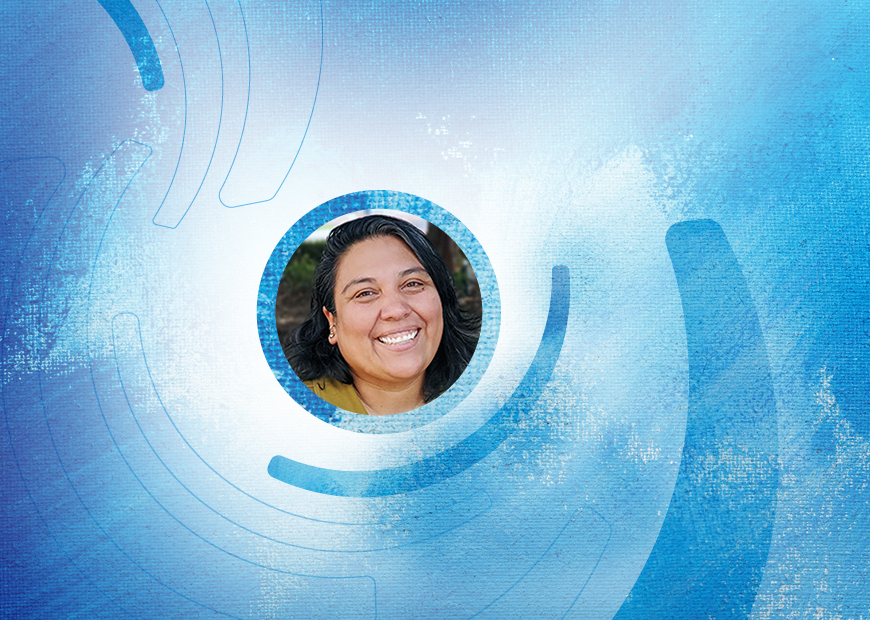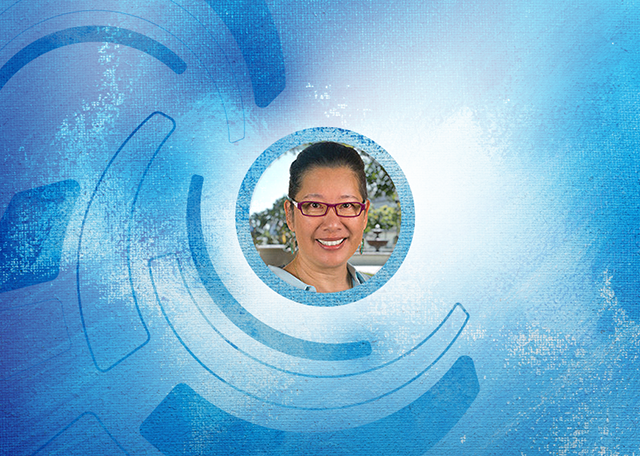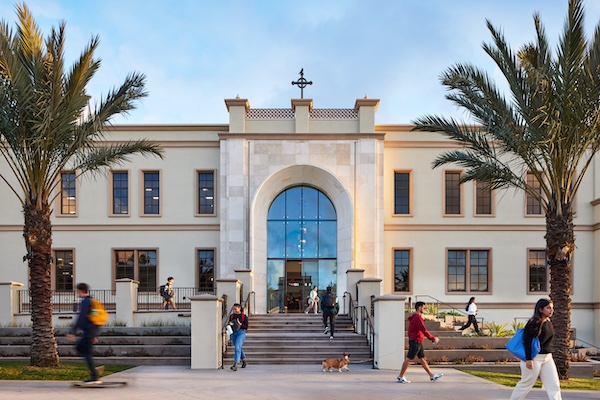Representation Through Scientific Exploration
USD’s STEM Outreach Club Partners with Linda Vista Elementary for ‘I’m a Scientist’ Program
 Two students from Linda Vista Elementary test whether ladybugs prefer light or dark spaces during a session of I’m a Scientist" on Thursday, April 18, 2024. The after school program is a partnership between USD's STEM Outreach Club and the local elementary school, and is focused on building agency and a love for science in school-aged children. (Photo by Matthew Piechalak)
Two students from Linda Vista Elementary test whether ladybugs prefer light or dark spaces during a session of I’m a Scientist" on Thursday, April 18, 2024. The after school program is a partnership between USD's STEM Outreach Club and the local elementary school, and is focused on building agency and a love for science in school-aged children. (Photo by Matthew Piechalak)A pair of youthful eyes, illuminated by a flashlight and amplified by a magnifying glass, peer down at live ladybugs crawling inside a closed petri dish.
“I heard a story,” a USD student says aloud to the four children gathered around the table, “that the amount of polka dots they have is how old they are.”
The young scientist holding the magnifying glass grins without losing focus and squints with determination to count the black spots on one of the red invertebrates.
It’s a Thursday afternoon inside a classroom at the elementary school located two miles north of the university, and several college students from USD’s STEM Outreach Club are leading their “I’m a Scientist” program. The weekly after-school program is a partnership between the student-run club and the local elementary school and is intended to teach students from transitional kindergarten through first grade a crucial lesson about representation — everyone can be a scientist.
The program is funded by the Impact Linda Vista Initiative, which connects USD faculty and students with community partners for the development of innovative and sustainable course-based collaborations in the local community. The club is composed of undergraduates from engineering and science majors passionate about community service and building near-peer relationships with local K-12 students to increase science self-efficacy and enthusiasm.
“The mission of our club is to bring hands-on, brains-on activities to our K-12 community in hopes of fostering a life-long appreciation for science and hopefully some of them will go on and pursue STEM,” said USD Biology Professor Laura Rivard, PhD, who serves as faculty advisor for the club. “This is what being an anchor institution is all about — being able to take the resources that we have and share those with the community and in return, learn from them, as well.”
“I’m a Scientist” is an eight-week program, with the first four sessions focused on teaching the young scientist the components of the Scientific Method. The final four sessions involve experiments that emphasize putting the method into practice.

Today’s experiment is the first, and focuses on determining what environments ladybugs prefer — hot or cold, light or dark, uphill or downhill. Roughly two dozen students, many donning lab coats, are gathered around noisy tables, excited to work with the college students.
“If you guys were ladybugs, do you think you would like it light or dark?” STEM Outreach Club Vice President Tori Jehle asks a group of students before covering a portion of the enclosure with foil to test the experiment. The elementary students work to make a hypothesis, test their queries and come to a conclusion before tracking the results.
“I really love STEM and I love spreading that passion with others, so when I heard about STEM Outreach, I went to one event and I was hooked,” said Jehle, a fourth year Behavioral Neuroscience major. “I love the feeling of being able to spread my joy of STEM with people in the community.”
STEM is a common acronym for four closely-connected areas of study: science, technology, engineering and mathematics.
STEM Outreach Club President Jayda Walsh walks among the small groups, checking in with individual students, pausing the lesson to provide progress updates and generally serving as the classroom teacher, which is apropos for the fourth-year Chemistry major given her professional aspirations.
“I want to be a teacher and when I found this club my sophomore year, it was the perfect combination of what I love — science and teaching,” said Walsh.
While the STEM Outreach Club does have male members, all of the volunteers at today’s session are female, an important distinction given that women are an underrepresented group in STEM fields.
Representation matters, because an individual cannot be what they don’t see.
“It’s a big deal,” said Dr. Rivard. “When young girls can see women doing what they think they might want to do, it plants a seed for these young girls that ‘if she can do it, I can do it.’”
“I really want to show young girls that they can do this and it’s possible,” said Jehle. “I have had a lot of women role models at USD. Being able to look at what they did for me and convey that to the kids here is really special.”
As each group completes the experiment, it’s time to release the ladybugs back into the world. The children sashay loudly through the school hallway and into the brilliant afternoon sunshine of the school’s enclosed courtyard. Some of the children begin hunting for grass and flowers to test a new research question: what will ladybugs eat? Other children are more enthusiastic about trying to get the beetles to land on their hands and arms.
Near the corner of the turf, one female student appears visibly hesitant to go near the bugs — or her peers. Aware of this, Walsh takes one of the petri dishes and kneels near the young girl; careful to maintain a respectful boundary. Talking in a soft and measured voice, Walsh places one of the ladybugs on the back of her hand and holds it out.
The girl carefully inches forward to get a better look. Leaning forward with eyes wide, a wry smile begins to cross her face. Her eyes light up with appreciation.
“To make those connections and really see how smart and capable they are has been really fulfilling,” said Walsh. “I’ve walked out of these doors every Thursday so proud of what we are doing here.”
— Story and photos by Matthew Piechalak; video by Cameron Zech





